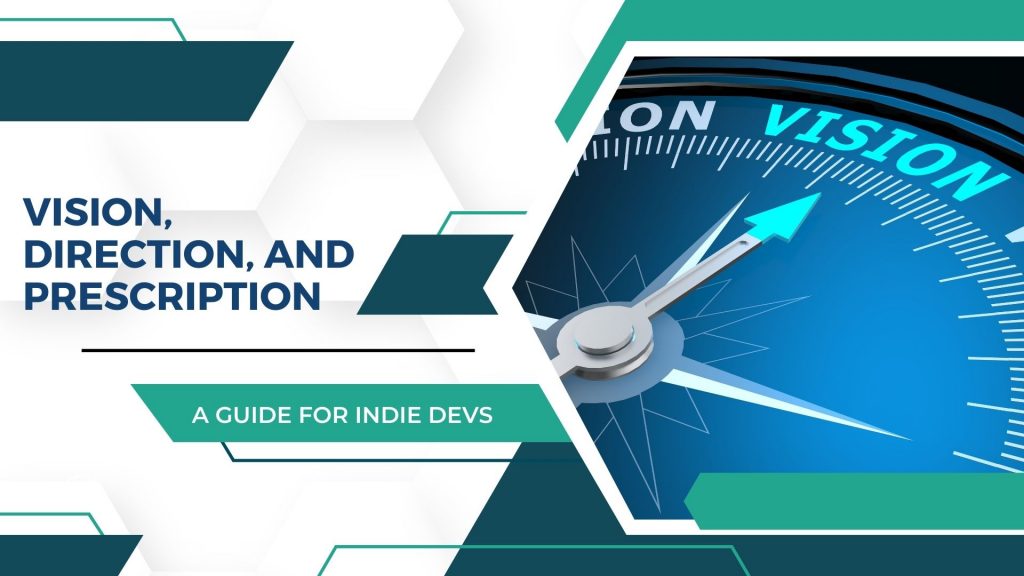
As an indie studio leader, you face many creative challenges. You have to balance your team’s vision with your budget and time limits. You also have to communicate, coordinate, and collaborate effectively with your talented and passionate team members. How can you lead them creatively and help them achieve their best work?
There are approximately 8,425,656 different leadership tactics according to a figure I just made up. Joking aside, you can likely find leadership tactics that mesh with your own leadership style and the needs of your team…
But you also need a strategy or approach to apply them so can get results and help your team, your studio, and yourself be successful.
For creative leadership, this can be done with a framework that provides layered input & feedback, providing empowerment to your team, and when necessary – the means for quick decisive action… Vision, Direction, Prescription.
So, what’s that actually mean and how can you use it?
Vision
The “Why”
Vision is the cornerstone of your creative leadership. It’s not just your personal vision for the game; it’s a shared understanding that inspires and focuses the entire team. Articulate your vision clearly and consistently, ensuring everyone is aligned on the “Why” behind the game, the “Why” behind a feature, and the “Why” behind a decision. It not only helps keep your entire team focused in the same direction, Vision provides the foundation and roadmap to help guide their decision-making at every level.
Direction
The “What”
Direction is how you translate your vision into concrete and engaging elements (features, characters, systems, abilities, narrative, etc…) The goal is to provide you and your team with the context and clarity they need to design and develop everything in the game – and to do so in a way that channels the Vision so that it connects with, delights, and surprises your target audience.
Prescription
The “How”
Important – Prescription is a tool you should reach for infrequently. It’s useful in a ‘break glass in case of emergency’ situation but it can demotivate and disengage your team. Use this as little as possible and with as light a touch as possible.
For the purposes of this framework, Prescription is straight-up dictating a specific answer, approach, or implementation.
In other words, “Do it like this.”
In an ideal scenario, you’d rarely need to resort to Prescription. You get the best results when the “how” comes from the team based on the Vision and Direction, so reserve this for rare cases, such as hyper-tight deadlines or emergency-type situations (like you’re demoing the game at show and something goes wrong).
How To Put This Into Practice
All right, enough with the basics. Let’s take a look at some ways to put this into action.
Establish A Shared Vision
Take the time to establish a shared vision, and do it early on. Involve your team in shaping the vision, ensuring everyone has a stake in it. Establishing it isn’t enough though, which leads to…
Communicate The Vision Regularly
Consistently remind your team of the “Why” behind the game, keeping them motivated and aligned. It’s important to remember, especially as your team grows, not everyone communicates the same way – so be sure to communicate it across “channels” verbal, written, visual, etc…
Foster Autonomy
Use Vision and Direction to foster autonomy. This approach provides enough guidance to keep the team on track and gives them freedom to explore their creativity.
Cultivate Open Communication
Good ideas come from anywhere and anyone. Cultivate a culture of open communication. Encourage team members to share their ideas and concerns openly. To get the most from your team, to give them the space they need to surprise you with amazing results absolutely REQUIRES psychological safety.
A Final Word
Anyway, wrapping this all up, by effectively utilizing a Vision, Direction, and Prescription framework, you can empower your team to produce exceptional work that brings your shared vision to life, and allows your team’s talent and passion to shine through.
